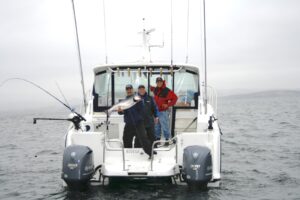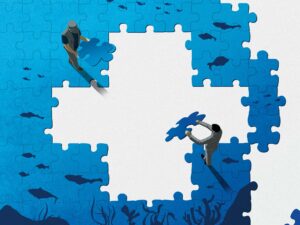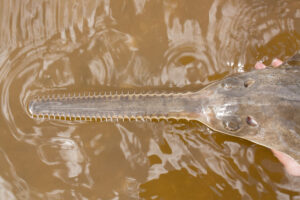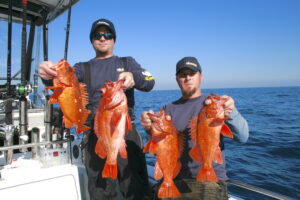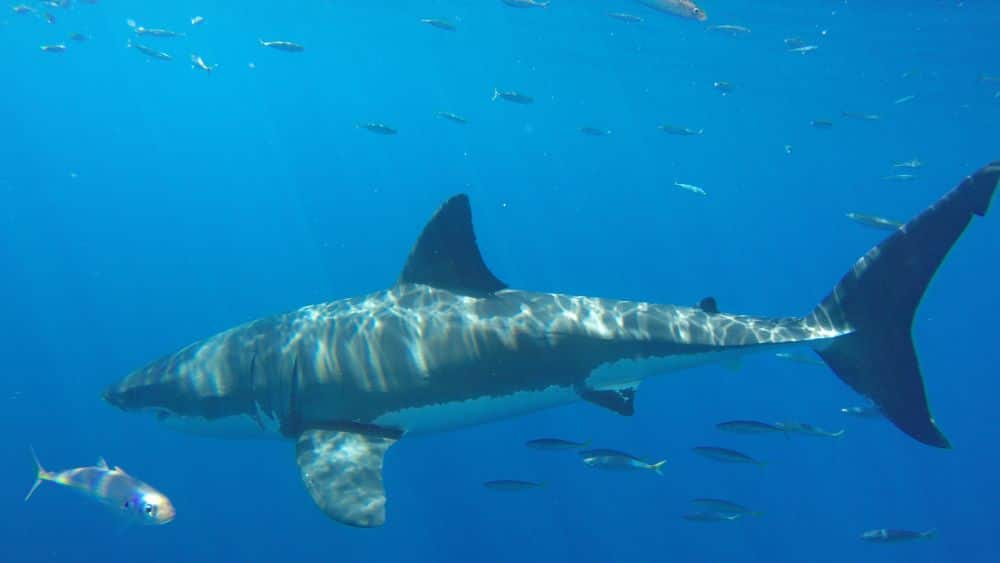
Newly passed legislation in California, Assembly Bill 2109, aiming to beef up protection for great white sharks, has left anglers wondering how to comply while targeting other fish, especially other species of shark.
The great white was already a protected species in California, and intentionally targeting them has been illegal for many years. But the new regulations (effective January 1, 2023) aim to close loopholes used by perpetrators to argue that their sharks were hooked incidentally while fishing for other species.
New Great White Legislation Ripe for Misinterpretation
Under the new statute, it’s unlawful to, “Place any shark bait, shark lure, or shark chum into the water within one nautical mile of any shoreline, pier, or jetty when a white shark is either visible or known to be present.”
AB 2109 defines shark bait, lures and chum as, “… any natural or manufactured product or device used to attract sharks by the sense of taste, smell, or sight, including, but not limited to, blood, fish, or other material upon which sharks may feed, and surface or underwater decoys.”
Such vague language could be applied to just about any chum, bait or lure, used in salt water, and therein lies the problem with the new white shark protections. The new regs leave law-abiding anglers in California wondering how the new rules will affect them as they target other species.
Conservation Organizations Weigh In on Vague Regulations
“We understand the intent, but we don’t completely understand how this will be enforced,” says Wayne Kotow, executive director of the Coastal Conservation Association of California, the state’s biggest non-profit organization representing recreational fishing interests. “Just about any chum or bait in the water could be considered shark chum or bait.”
“We tried to work with the California legislature to tighten up the language, but to no avail,” says Kotow, who applauds the intent of AB2109, but believes that anglers need more guidance from the California Department of Fish and Wildlife (CDFW), such as a list of frequently asked questions and answers. “I understand from my discussions with the Department that such a document is in development,” he adds.
Even more confounding is language about the presence of a white shark. Most of the time, anglers can’t really identify or even see fish underwater, so how are they to know if a great white is in the area?
“Every situation is different, but it’s really about situations in which a great white is sighted or there’s a reliable report of one while the angler is fishing.” says John Ugoretz, pelagic fisheries manager for the CDFW.
Does that mean you need to stop fishing all together? It’s possible, Ugoretz says. “If you are targeting other species of shark, such as threshers at that particular time, your activities might be curtailed,” he explains. Curtailment could last hours, days or weeks, depending on how long the white shark remains in the area, Ugoretz says.
However, it’s not just what you’re fishing for, but how you are fishing, Ugoretz points out. “If you’re fishing with a sardine on a 2/0 hook with a monofilament leader, you’re probably OK,” he says. “But if you’re using a heavy cable leader, a 10/0 hook and a dead stingray, that indicative of someone targeting white sharks.”
Regardless of tackle, it’s a good idea to stop chumming, as there’s no way for law enforcement to differentiate between shark chum and any other type of chum, no matter what the intent. Continuing to chum when a white shark is visible could well land you an expensive ticket.
Well-Known Great White Shark Nursing Grounds
The coastal waters of Southern California in particular are well known as a nursery ground for juvenile great white sharks. They are often sighted just outside the surf zone by lifeguards, patrol helicopters and others, and this is regularly reported by news outlets in the interest of beach safety. Nearshore sightings have led some unscrupulous anglers over the years to target these fish from shore, piers and jetties. In one particular incident over the 2014 Fourth of July weekend, a hooked white shark attacked a swimmer, inflicting a bite to the man’s torso, as an angler battled the fish from the Manhattan Beach pier. The incident prompted a temporary ban on fishing from the pier. The 40-year-old swimmer survived his injuries.

